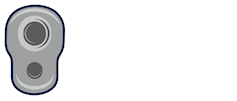chef.hunter.elliott
Well-Known Fanatic
Does anybody have some good 3-gun drills for me to practice. after this weekend, i realize i need to start practicing a whole lot more to be at the top 10%.
If you are going to be any good at any shooting sport you better just stick with calling every shot every time. That doesnt mean some extraordinary sight picture on hoser targets but you still need to know what the acceptable sight picture looks like even if its just looking down the top of the gun at a target 3 ft away because if you do that and YOU know that is all you needed to see to hit the target then you HAVE called your shot. Personally I think the more you shoot the more you figure out how BAD of a sight picture you can get away with. I win some club matches sometimes because i have less penalties then people not calling their shots, it is really apparent when you see someone hosing rifle targets or something and they go back and throw another one on a target because as they are shooting they realize they didnt have the right sight pic on a particular target and only threw a hoper and hopers will kill you... or at least they do me. Thats my 2 cents but there are a lot of WAY better shooters on here then me...hunter elliott said:Now that I know the way things are scored I can look at the stages/targets and break down where I should have slowed down and gotten better hits instead of trying to blaze through the stage. Am I basically going to have to call my shots from longer distances?
Yes the 300 targets to 450 been having an issue with them i preaty much have everything else down but am still working on it. its just them darn distant targets that point and laugh at me.David Marlow said:What do you mean by long range? Are you talking MGM flash targets at 300, or are you talking 700 yards or more with a bit of time allowed to engage?
Is your rifle and ammo capable of shooting 1 moa or less at 100 yards? If not, go no further and fix that issue.sergio10 said:Yes the 300 targets to 450 been having an issue with them i preaty much have everything else down but am still working on it. its just them darn distant targets that point and laugh at me.
